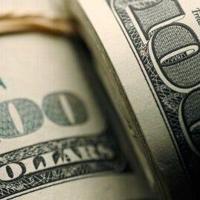
There has been a lot of talk about a “cashless” society, but it’s not here yet. In fact, cash can still be a valuable part of your overall financial picture, if you use it wisely. But how?
Consider these four key uses of cash:
Daily expenses – Of course, you need enough cash on hand to pay your living expenses: mortgage, debt payments, utilities, groceries, etc. You likely rely on your savings or checking accounts to pay for these needs.
Unexpected expenses and emergencies – It’s never a bad idea to set a monthly budget. But as you know, life is unpredictable, and sometimes you can run into budget-busting expenses, like a major home repair or a big medical bill. If you haven’t planned for these costs, you may be forced to dip into your long-term investments, such as your IRA and 401(k), which can lead to taxes, penalties and less money for your retirement. A better alternative is to prepare in advance by building an emergency fund containing up to six months of living expenses in cash, or at least in a highly liquid account, separate from your regular checking or savings account, so you don’t spend the money unintentionally.
Short-term savings goal – When you’re investing for a long-term goal, especially retirement, you should probably have a reasonable percentage of growth-oriented vehicles, such as stocks and equity-based mutual funds. The value of these investments will fluctuate, so if possible you’ll want to avoid selling them when their price drops, which can make them unsuitable for short-term goals. But if you’re aiming for a goal that you want to achieve in a year or so (a wedding, a long vacation, etc.), you’ll want to make sure that a specific amount of money will be there when you need it. Consequently, you’ll want to stash cash for these types of goals, possibly in a short-term savings or investment vehicle that can pay slightly higher interest than a regular checking/savings account.
Source of investment – When it comes to your long-term investment strategy, cash can play two important roles. First, it can serve as its own asset class, alongside other classes such as stocks and fixed income vehicles. Unlike these other classes, especially stocks and equity-based mutual funds, cash won’t fluctuate in value, so it can help reduce the impact of market volatility on your portfolio. And secondly, having the cash available in your portfolio gives you the opportunity to quickly take advantage of other investment opportunities that may arise. And you may be able to use your existing investments to help replenish the cash in your portfolio. For example, if you choose to take stock dividends in cash, those dividends can be “rolled” into your brokerage account and held there until you’re ready to invest them. (However, depending on your overall financial strategy, it may be a good move to simply reinvest the dividends in the same stocks or stock funds.) Keep in mind that you don’t want your investment accounts to hold too much cash, as its purchasing power can erode due to inflation.
By managing your cash efficiently and using it in a variety of ways, you can reap some key benefits and help keep you moving towards your short- and long-term goals.
Jennifer Barrett (AAMS) is a local financial advisor at Edward Jones.
225-612-0413 | jennifer.barrett@edwardjones.com
Edward Jones. SIPC member.
Edward Jones, its employees and financial advisors are not estate planners and cannot provide tax or legal advice. You should consult your estate planning attorney or qualified tax advisor regarding your situation.
This article was written by Edward Jones for your local Edward Jones Financial Advisor.
[ad_2]
Source link





